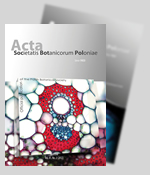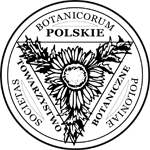Abstract
The fruit structure of tomatillo, a new vegetable crop in Poland, has not been yet investigated. The surface of the fruit as seen in SEM shows amorphous and cristalline wax-like deposits. Almost every fourth or fifth epidermal cell has a small appendix covered with cuticle and wax-like substance. No trichomes were found. The anatomical structure of the fruit is similar to that of several other Solanaceae species. The epidermis shows polygonal, tabular cells with a large nucleus. Subepidermis is composed of 1-4 layers of collenchyma-like cells, sometimes very flattened and compressed. The pericarp contains thin-walled round cells increasing in size toward the center. The cells originating from placentae are very large and elongated radially, frequently irregular. The vessels are situated centrally in the vascular boundle and are surrounded by parenchyma with the phloem strands at the periphery of it. Some fruits show microcracks extending from the epidermis throughout collenchyma-like layer.
Keywords
fruit anatomy; SEM surface micromorphology; fruit microcracks; Physalis ixocarpa







